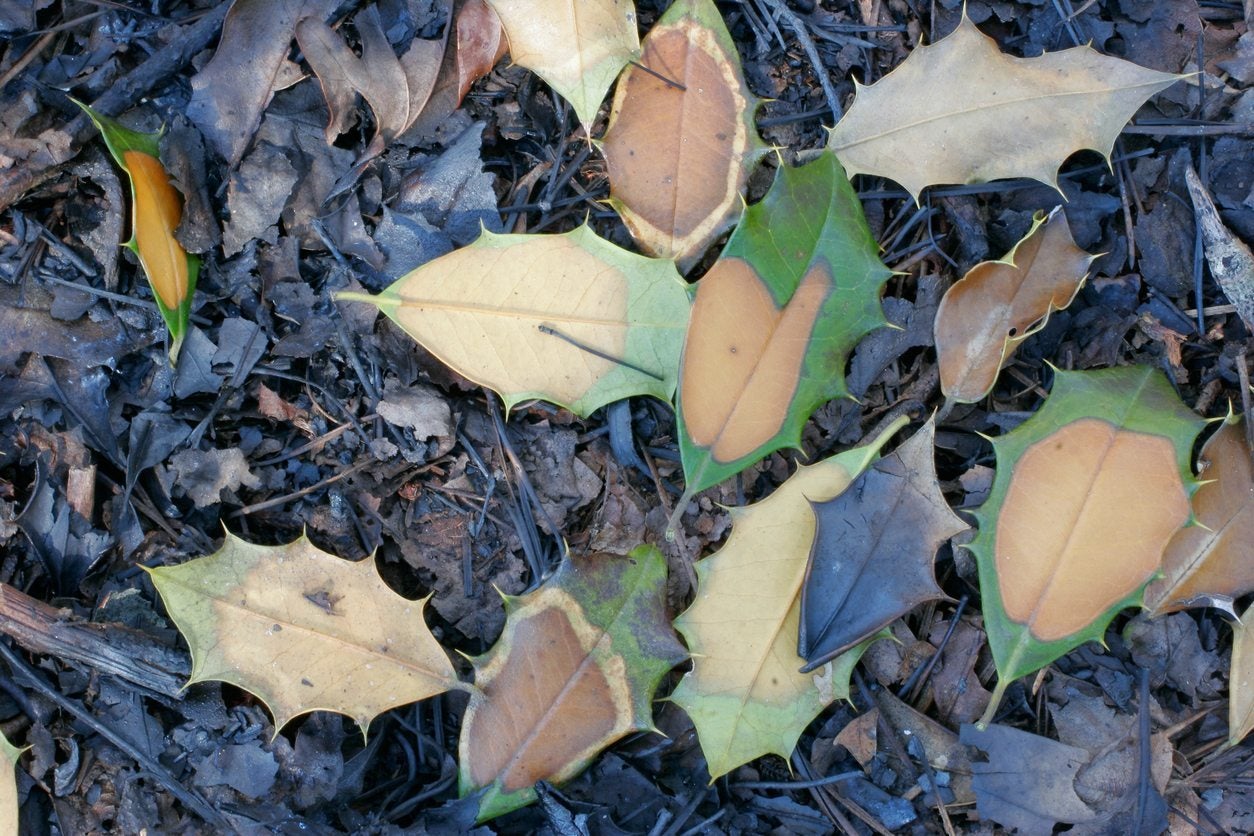Holly Spring Leaf Loss: Learn About Holly Leaf Loss In Spring

It’s springtime and your otherwise healthy holly shrub develops yellowing leaves. The leaves soon begin dropping off. Is there a problem or is your plant okay? The answer depends on where and how the yellowing and leaf drop occurs.
About Holly Spring Leaf Loss
Holly leaf loss in spring is normal if the older leaves (those closer to the shrub’s interior) turn yellow and then shed from the plant, while newer leaves (those closer to the tips of the branches) stay green. You should still see green leaves on the exterior of the shrub even if the interior is thinning out. While it may appear alarming, this is normal holly behavior. Also, normal holly spring leaf loss occurs in one “batch” and only in the spring. If the yellowing or leaf loss continues into summertime or begins at other times of year, something is wrong.
Why Does Holly Lose Leaves in Spring?
Holly shrubs normally shed some leaves each spring. They grow new leaves and discard the older leaves when they are no longer needed. Loss of older leaves to make room for the new season’s growth is common among many evergreens, including both broadleaf and coniferous trees and shrubs. If a plant is stressed, it may shed more leaves than usual during its annual leaf drop, creating an unattractive appearance. To prevent this, be sure to give your holly shrubs the conditions they need. Ensure they are planted in well-drained soil, provide water during droughts, and do not overfertilize.
Causes of Unhealthy Leaf Drop in Hollies
Spring leaf drop in holly can signal a problem if it does not follow the normal pattern described above. Leaf yellowing and loss at other times of year should also make you suspect that something is wrong. The following are possible causes: Watering problems: Lack of water, excessive water, or poor drainage can cause leaves to yellow and fall off. This can happen at any time of year. Disease: Holly leaf spot caused by Coniothyrium ilicinum, Phacidium species, or other fungi can cause yellowish brown or black spots to appear on leaves, and serious infestations can cause springtime leaf drop. These fungi primarily attack older leaves. However, the roundish or irregularly shaped spots will appear different from the yellowing that occurs during normal leaf drop, which usually affects the entire leaf. It is important to recognize the difference so you can take measures to control the disease, such as cleaning up fallen leaves with signs of infection to prevent spread of the disease. Winter weather: Injury from winter weather often appears on one side or section of the plant, and the outer leaves (near the tips of branches) may be most affected-- the opposite pattern from what you would see with normal spring leaf drop in holly. Even though the damage occurs in winter, browning might not show up on hollies until spring.
Sign up for the Gardening Know How newsletter today and receive a free copy of our e-book "How to Grow Delicious Tomatoes".
Ilana Goldowitz Jimenez is a scientific and agricultural writer with a B.S. in Plant Sciences from Cornell University and a PhD in Chemical Biology and Infectious Disease from Harvard University.